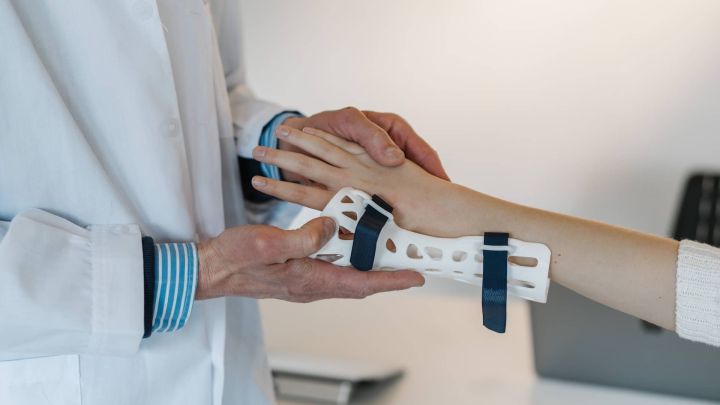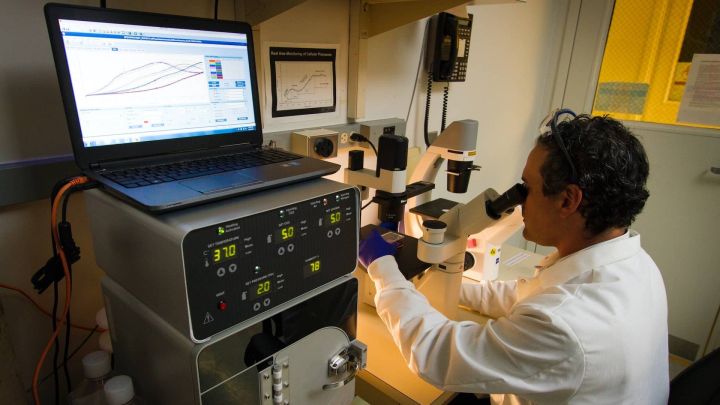Apparatus
Flexible intelligent device allows stroke patients to walk freely
Stroke is the main cause of disability in Americans. More than 6.5 million Americans survive stroke every year, and most of them cannot fully recover their walking ability. Experts said that because of the difficulty in walking, these patients would not even go out to the store to buy things, but they were inactive for a long time, which led to other health problems and a spiral decline in their quality of life.

Stroke is the main cause of disability in Americans. More than 6.5 million Americans survive stroke every year, and most of them cannot fully recover their walking ability. Experts said that because of the difficulty in walking, these patients would not even go out to the store to buy things, but they were inactive for a long time, which led to other health problems and a spiral decline in their quality of life.
The wearable flexible intelligent ankle device developed by Harvard University researchers can help stroke patients walk more freely.
Stroke is the main cause of disability in Americans. More than 6.5 million Americans survive stroke every year, and most of them cannot fully recover their walking ability. Experts said that because of the difficulty in walking, these patients would not even go out to the store to buy things, but they were inactive for a long time, which led to other health problems and a spiral decline in their quality of life.
In recent years, breakthroughs have been made in the field of exoskeleton technology, greatly improving the performance of crutches, walking aids, orthotics and other assistive devices. However, most of these exoskeleton devices are too rigid, which can only help patients who can not walk after stroke, and are not suitable for some patients who can walk after stroke.

In the new study, Connor Walsh, a software robot scientist at Harvard University, and his colleagues developed a flexible, ultra light, wearable intelligent device that can help stroke sequelae walk again. Walsh said that the new device outside the software can provide great help to patients who still retain some of their walking ability, allowing them to walk in a more natural way.
This intelligent device weighs only 900g, including a belt and a leg strap connected with the leg sleeve. The actuator tied to the belt is 2.63 kg (including 560 g battery), which is connected to the insole through optical cable to push the legs forward and correct the toe and ankle bending problems caused by foot droop.
In the two-day test, nine stroke sequelae patients aged 30 to 67 years old were able to walk on the treadmill and open ground after wearing this intelligent device, and their walking ability and symmetry were improved by 10% and 20% respectively. After wearing the device, the walking ability can be significantly improved within a few minutes, and the effect is equivalent to receiving long-term clinical rehabilitation treatment. For those patients who can walk slowly without auxiliary devices, the effect is most obvious. Researchers say they will continue to develop similar intelligent devices that can be worn on the knees and hips to better help these patients.
-
![]()
![]() ApparatusJul 13, 2025
ApparatusJul 13, 2025Mysterious gel quickly seals wounds
-
![]()
![]() ApparatusJul 12, 2025
ApparatusJul 12, 2025Significantly Longer Survival In Refractory Breast Cancer With The Addition Of Eganelisib To Standard Treatment!
-
![]()
![]() ApparatusJul 11, 2025
ApparatusJul 11, 2025Perkinelmer Launches Industry-First Cell Analysis Solution
-
![]()
![]() ApparatusJul 10, 2025
ApparatusJul 10, 2025The "hand speed" is extremely fast, and scientists create a DNA robot arm that can move at a high speed
-
![]()
![]() ApparatusJul 09, 2025
ApparatusJul 09, 2025Flexible intelligent device allows stroke patients to walk freely



